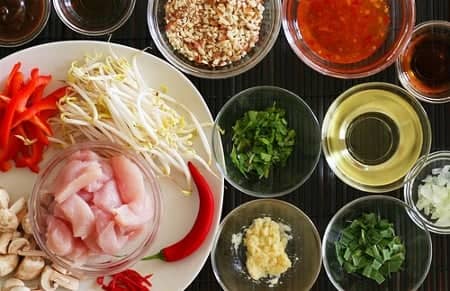We've all heard the T.V. nutritionists say it – we need to eat certain foods in moderation, others in abundance, others barely at all, and the balance can shift radically depending on our time of life and associated behaviours.
Content writers and B2B content marketers – take heed! Too often, we end up feeding our prospects and customers material that simply isn't useful or beneficial for their particular stage in the sales process. So how do you ensure you're serving up a content menu that your audience can relish, digest and demand more of?
Remember your goal
Let's backtrack for a moment. Arguably, all the B2B content marketing that you do, you do ultimately for one purpose: to sell your product or service. If that sounds a little unpalatable in this age of customer-led and permission-driven marketing - a little too Glengarry Glen Ross - think on what I said in this previous post – “likeability” is a precondition of “saleability”.
Enter the commonly cited “sales funnel”. The different concerns and priorities of customers at every major stage in the funnel mean that their appetite for content is very highly differentiated too. Expose the wrong content at the wrong stage and it can be the equivalent of feeding baby food to a grown man or vindaloo to a newborn. Kiss goodbye to your sale!
The starter
Let's take a brief look at what the funnel inhabitants need to consume as they journey down the ever-more constricted path of the funnel towards the final closing deal. This simple and effective guide to B2B content through the sales funnel sets out the stages in terms of three distinct goals: “brand awareness”, “product knowledge”, and “closed deal.”
Consider the first of these for a moment. Your embryonic customer is in information-seeking mode. They know little about your company and they are probably not entirely sure where to begin. They are what has been called “the very many people who you think might need your product or service, but to whom you've never spoken.” And this is exactly the point – you need to start the conversation with them.
Plunging straight into discount offers and price lists is conversational suicide. Instead, our guide proposes content that it describes broadly as “social posts” for this stage: social media content, videos, infographics, articles, newsletters. All pleasant, digestible fayre.
But it's how you season them that helps to determine whether they will be an effective conversation opener or not. Sprinkle them liberally with helpful advice - a “how-to” guide, for example - and you're likely to find a willing interlocutor. Pepper them too heavily with information about you, your company and your products, and your prospect will want to talk to somebody else instead.
The main course
The description of this stage as “product knowledge” is perhaps a little misleading. It's actually less to do with the prospect knowing about your products and more to do with their realising that the products actually exist in the first place! Think of the peckish diner who doesn't have a clue what's in a Rutland pie but has just seen a picture of it on the menu and feels pretty convinced.
The prospect's awareness of the product provides you with additional opportunities to, as we have commented elsewhere, deepen your relationship with them and provide all-important validation. So, the content in this stage of the funnel should be largely occupied by case studies, testimonials, reviews and other third-party endorsements.
The dessert
At the bottom of the funnel, it's the sweetest material of all – the kind that supports increased online or face-to-face engagement with the prospect, with the objective of trying to convince them to make a final commitment to your product or service.
Yet you'll have noticed that, from the top of the funnel downwards, the B2B content produced has gradually reduced in scope and variation, as its function has become more targeted and sales-focused. In short, a customer at this stage wants to receive far less content writing from you and far more in the way of calls to action.
Free trials and demos, quotations, and free consultations rule supreme at this juncture - words and pictures just don't cut the mustard (or should that be custard?) any more.
Tone vs. form vs. content
What the above doesn't take into account, however, are the less rational ingredients in the mix - namely, the emotional and the playful. Appealing to instincts outside of the prospect's “official” armoury of content wants and needs, according to research from SmartInsights, can be almost as effective in informing a purchasing decision as traditional rational content, along an axis running from “entertain” to “inspire.”
What this means, in turn, is that a traditionally rational content medium (say, a case study or a customer testimonial) - can assume a more entertaining form (video, for example; or even a comic book - and yes, it's been done!) and still fulfil its role within the sales funnel.
It's nothing short of a green light to vary your B2B content marketing in both taste and texture. Get it right, and the Cordon Bleu of content is well within your reach.
Image by gkamin



